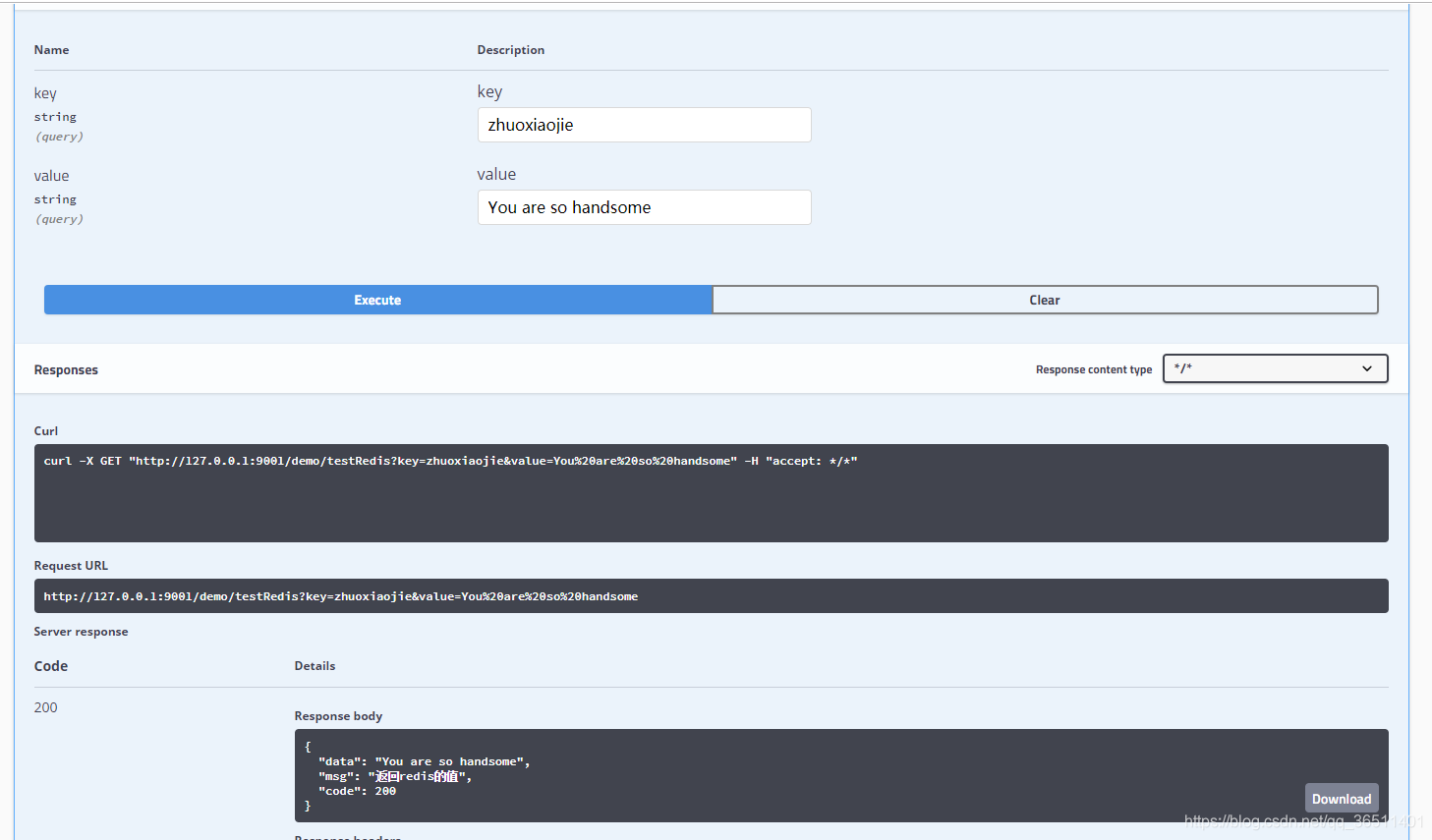1、redis的安装和简单的命令可以参考的其他文章Redis 采用指令和Redis window上安装和使用。

2、pom的依赖。
<!--基础-->
<dependency>
<groupId>org.springframework.boot</groupId>
<artifactId>spring-boot-starter</artifactId>
</dependency>
<dependency>
<groupId>org.springframework.boot</groupId>
<artifactId>spring-boot-starter-web</artifactId>
</dependency>
<!--redis-->
<dependency>
<groupId>org.springframework.boot</groupId>
<artifactId>spring-boot-starter-data-redis</artifactId>
</dependency>3、application.properties的配置。
server:
port: 9001
spring:
profiles:
active: dev
redis:
database: 1
host: 127.0.0.1 #119.23.206.197 127.0.0.1
port: 6379 #6379 6379
password: zhuoxiaojie #19960815 zhuoxiaojie
pool:
max-active: 1000 #最大连接数
max-wait: 2000 #阻塞时间
max-idle: 100 #最大空闲
min-idle: 20 #最小空闲
timeout: 50004、对redis服务的简单封装,具有快速使用增删改查。
package com.zxj.reptile.service.redis;
import org.springframework.beans.factory.annotation.Autowired;
import org.springframework.data.redis.core.StringRedisTemplate;
import org.springframework.data.redis.core.ValueOperations;
import org.springframework.stereotype.Service;
import java.util.concurrent.TimeUnit;
@Service
public class RedisService {
// Redis为我们提供了两个模板
// StringRedisTemplate主要提供给我们操作字符串;
// RedisTemplate提供给我们操作对象;操作对象的时候最好自定义序列化器
@Autowired
private StringRedisTemplate template;
public boolean remove(String key) {
if (template.hasKey(key)) {
return template.delete(key);
}
return false;
}
public String get(String key) {
if (template.hasKey(key)) {
ValueOperations<String, String> operations = template.opsForValue();
return operations.get(key);
}
return null;
}
public boolean set(String key, String value) {
try {
if (template != null) {
ValueOperations<String, String> operations = template.opsForValue();
operations.set(key, value);
return true;
}
} catch (Exception e) {
e.printStackTrace();
}
return false;
}
public boolean set(String key, String value, Long expireTime, TimeUnit timeUnit) {
try {
if (template != null) {
ValueOperations<String, String> operations = template.opsForValue();
operations.set(key, value);
template.expire(key, expireTime, timeUnit);
return true;
}
} catch (Exception e) {
e.printStackTrace();
}
return false;
}
}
5、swagger的api测试代码。
package com.zxj.reptile.api.demo;
import com.baomidou.mybatisplus.mapper.EntityWrapper;
import com.zxj.reptile.api.AjaxJson;
import com.zxj.reptile.module.demo.entity.Demo;
import com.zxj.reptile.module.demo.service.IDemoService;
import com.zxj.reptile.service.redis.RedisService;
import com.zxj.reptile.utils.PropertyUtils;
import com.zxj.reptile.utils.StringUtils;
import io.swagger.annotations.Api;
import io.swagger.annotations.ApiImplicitParam;
import io.swagger.annotations.ApiImplicitParams;
import io.swagger.annotations.ApiOperation;
import org.springframework.beans.factory.annotation.Autowired;
import org.springframework.web.bind.annotation.RequestMapping;
import org.springframework.web.bind.annotation.RequestMethod;
import org.springframework.web.bind.annotation.RequestParam;
import org.springframework.web.bind.annotation.RestController;
import java.util.List;
@Api(value = "demo", tags = "demo测试Api")
@RestController
@RequestMapping("demo")
public class DemoApi {
@Autowired
private RedisService redisService;
@ApiOperation(value = "测试Redis", notes = "测试Redis")
@ApiImplicitParams({
@ApiImplicitParam(name = "key", value = "key", dataType = "String", paramType = "query"),
@ApiImplicitParam(name = "value", value = "value", dataType = "String", paramType = "query")
})
@RequestMapping(value = "testRedis", method = RequestMethod.GET)
public AjaxJson testRedis(@RequestParam(value = "key") String key, @RequestParam(value = "value") String value) {
AjaxJson ajaxJson = new AjaxJson<>();
try {
if (redisService.set(key, value)) {
ajaxJson.success("返回redis的值");
ajaxJson.setData(redisService.get(key));
} else {
ajaxJson.error("失败:");
}
} catch (Exception e) {
e.printStackTrace();
ajaxJson.error("失败: " + e.getMessage());
}
return ajaxJson;
}
}
6、记得测试前,要将本地的redis服务打开,测试结果。






 本文详细介绍了如何在Spring Boot项目中集成Redis,包括依赖配置、属性设置、服务封装及Swagger API测试,为开发者提供了一个完整的实践指南。
本文详细介绍了如何在Spring Boot项目中集成Redis,包括依赖配置、属性设置、服务封装及Swagger API测试,为开发者提供了一个完整的实践指南。
















 21万+
21万+

 被折叠的 条评论
为什么被折叠?
被折叠的 条评论
为什么被折叠?








